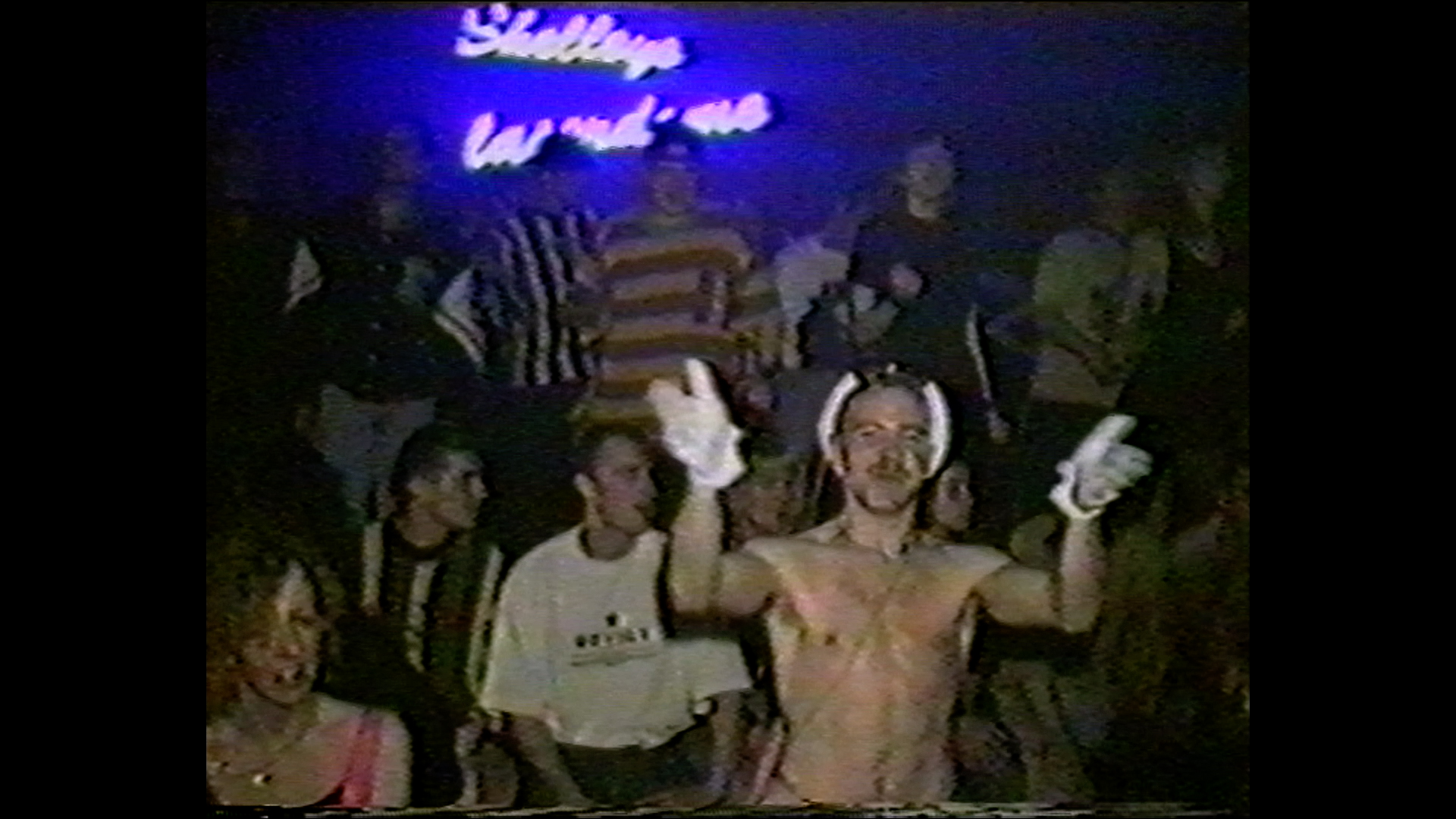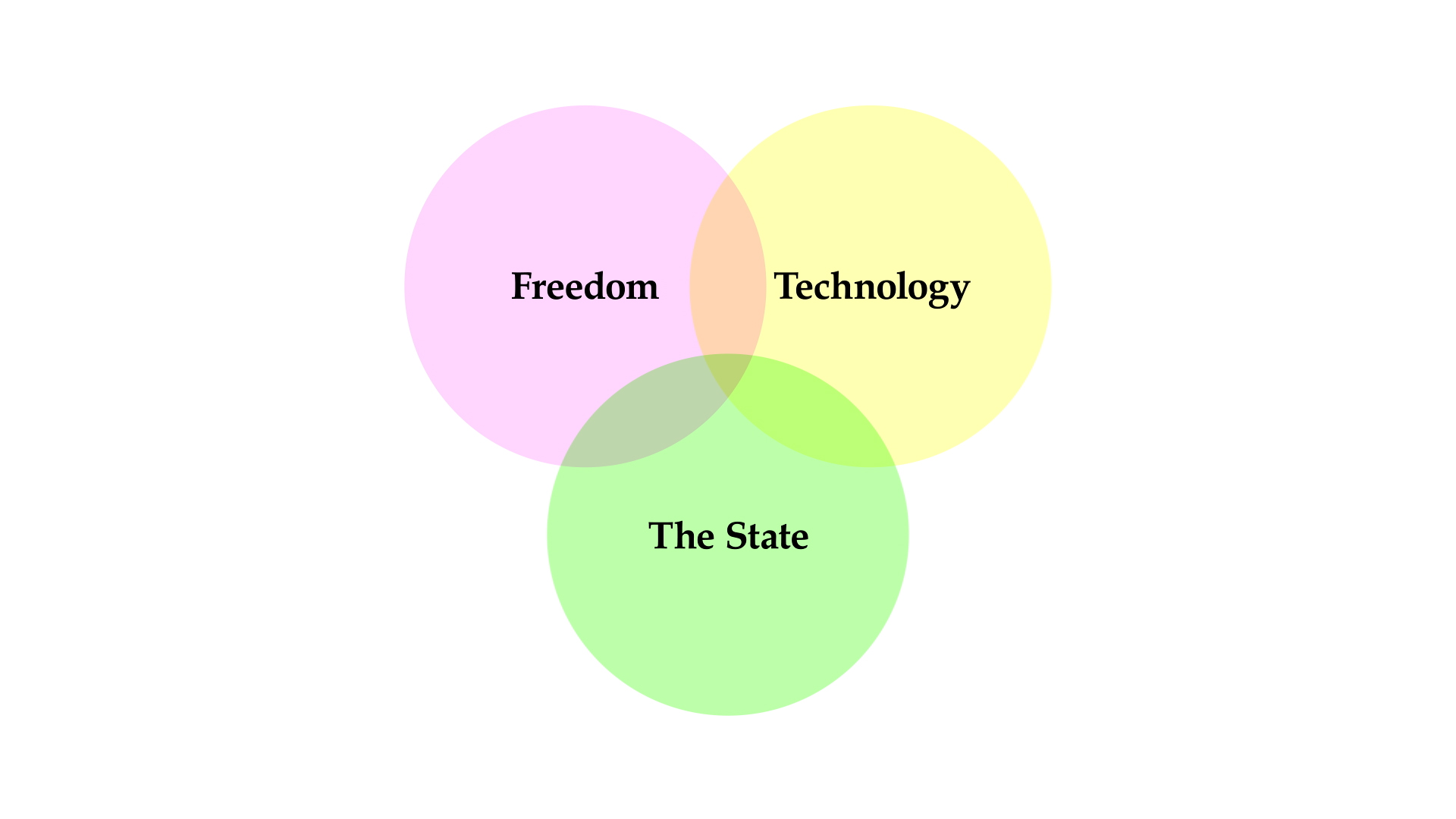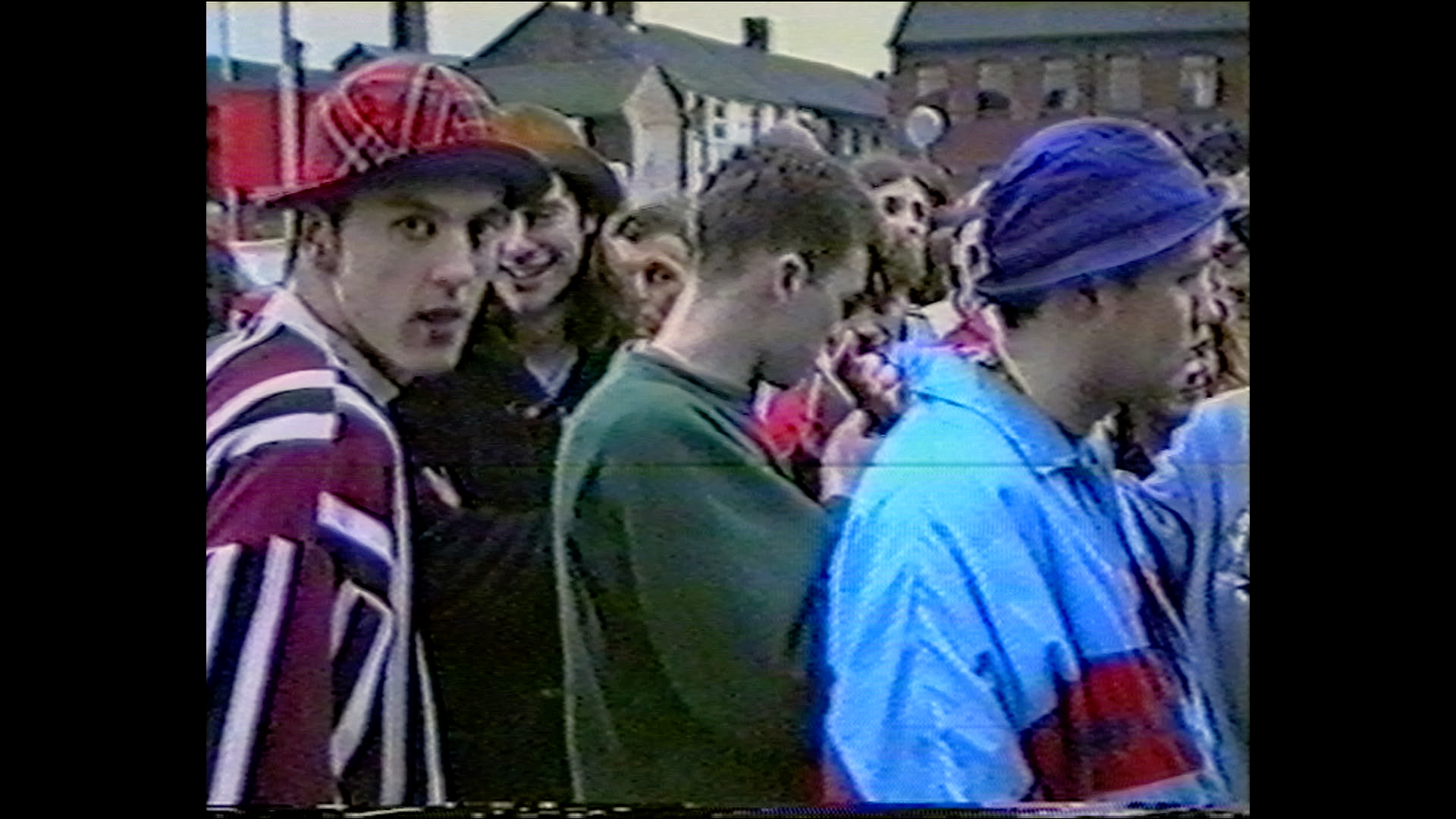Jeremy Deller’s rave documentary Everybody in The Place: An Incomplete History of Britain 1984-1992, attempts to answer the questions ‘what was the Second Summer of Love and what does it mean today,’ three decades after the drug-fuelled illegal raves changed the face of culture in Britain forever. Commissioned by Frieze and Gucci, as part of a new series inspired by this era of euphoric explosion, the English conceptual, video and installation artist joins a class of 6th form politics students for a lesson in how and why rave permanently ruptured and rebuilt British identity.

“I was 22 and very inactive,” Deller explains over email when we question his involvement in the rave scene back in 1988. Although he wasn’t dancing the night away in a field just outside the M25, he was watching from afar. “I realised at the time that it was an important moment for the UK, it was more than a fad,” he adds. Acclaimed for his focus on social history and ability to shine a light on the pressure points where pop culture and politics collide, Deller acts as the perfect guide for generation z to make sense of just why and how acid house soundtracked the frantic dismantling of old certainties, and helped rewire a new social order just as potent and influential as the original counterculture of the late 1960s. “The biggest truth about the Second Summer of Love is that the drugs helped,” Deller notes. “The biggest misconception is that it was just about drugs.”

With Everybody In the Place, the Turner Prize-winning artist upturns popular notions of rave and acid house, situating them at the very centre of the seismic social changes that shaped the twilight of Thatcher’s Britain. The story goes far deeper than a few London-based DJs discovering ecstacy while on holiday in Ibiza. Ultimately, the explosion of acid house and rave in the UK was a reaction to a much wider and deeper set of fault lines in British culture, stretching from the heart of the city to the furthest reaches of the countryside, cutting across previously-impregnable boundaries of class, identity and geography. The country’s youth were united in rave.
Alongside rare and unseen archive materials that map the journey from protest movements to abandoned warehouse raves and the white heat of dancefloor euphoria, we join an A-Level politics class as they discover these stories for the first time. Here, we can all view both the familiar (and unfamiliar depending on your age and love of rave culture) narrative from the perspective of a generation for whom it’s already ancient history.
Ultimately, the Frieze and Gucci commissioned series — Deller’s Everybody in the Place, Josh Blaaberg’s Distant Planet: The Six Chapters of Simona, and Wu Tsang’s Into A Space Of Love — explores just how this radical youth movement can be seen in almost every facet of contemporary culture. Its acid house beats echo into almost every corner of modern music, from mainstream pop charts to the experimental fringes. Just as importantly, it can be seen throughout contemporary visual culture too, from street style to the catwalk, and via its influence on the lives and work of contemporary artists. Could we have a Third Summer of Love? If so, what’s needed? “I’m too old to answer that question, ask a young person,” Deller concludes. Watch, learn and then kickstart your own Summer of Love.

Everybody in The Place and Distant Planet: The Six Chapters of Simona will be screened exclusively at the Gucci Wooster cinema space in New York from July 6 to 20. Then the full Second Summer of Love series will be screened together for the first time at Frieze London in October, followed by a discussion with the artists.
